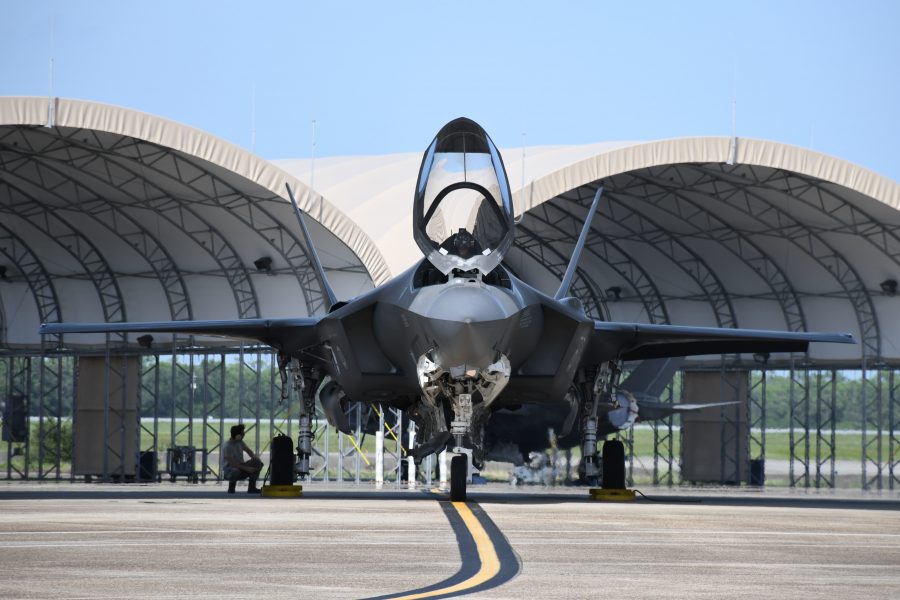The end of F-35 operational testing and declaration of full-rate production will likely come in March 2021—three months past the extension Pentagon acquisition and logistics czar Ellen M. Lord gave the program last year.
Lord extended operational testing of the F-35 last October from December 2019 to January 2021, in order to incorporate the fighter into the Joint Simulation Environment, which virtually pits various combinations of U.S. capabilities against foreign militaries. The system is designed to find the optimum numbers of various systems to acquire and deploy.
“I am confident that we are going to meet the March date,” Lord told reporters on Aug. 20. “We have the entire government/industry team focused on that.” However, she acknowledged there “have been setbacks within the JSE from COVID,” because it requires “a very close working environment.”
Lord said she will visit the Joint Simulation Environment at Naval Air Station Patuxent River next week with Robert F. Behler, Director of Operational Test and Evaluation, to ensure the team “has all the resources they need,” Lord said. Lord said the JSE team is complying with all Centers for Disease Control guidelines for safe working conditions. “They readjusted. They have operations there at least six days a week, if not seven, … and almost 24 hours” per day.
Pentagon officials said the necessary virtual wargames with the JSE intended to validate F-35 performance are expected to begin and end in December; some 64 virtual engagements are planned. It will take until March to analyze the results and send a report to Congress that the F-35 has met all conditions necessary to declare it ready for full-rate production.
Most other planned testing required for IOT&E is finished, such as live-fly two- and four-ship missions. Still incomplete are a cybersecurity test and two more weapons tests, which are supposed to be finished by the end of the year.
The F-35 has been operational since 2016, and has engaged in numerous combat missions flown by the U.S. and allies equipped with the jet, but the JSE will pit it against the toughest air defenses and aerial adversaries flown by “peer adversaries,” such as China and Russia.
The full-rate decision would signal a formal end to the F-35’s initial development and clear the way for the Pentagon to ask Congress for permission to buy the F-35 in multi-year lots, which would allow further price reductions. Multi-year contracts are prohibited until a major weapon system is deemed mature.
Lord also said the Pentagon is “in the midst of developing our budget request right now” for fiscal 2022, noting “the question of the mix of fourth-, fifth- and sixth-gen aircraft is one that is being debated right now.” Her comments marked the first time the Pentagon referred to development fighters beyond the F-22 and F-35 as “sixth-generation” aircraft.
Lord was responding to a question of how much money the Pentagon could save if the F-35 was terminated. That, she said, “is an impossible question to answer at this moment,” because the F-35 figures into all operational plans. “We have a tacair mix” to fulfill combat requirements, “so if you canceled the F-35, the question is, what backfills for that capability? That costs something as well.”
